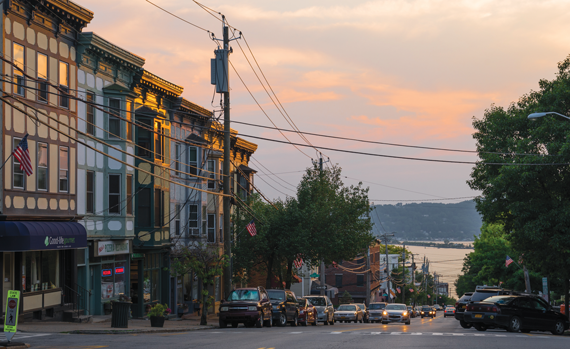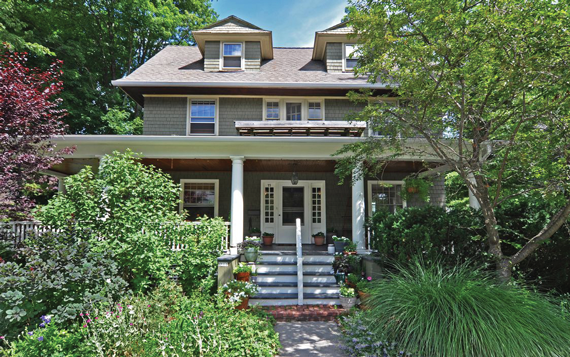Trending
Bidding wars on the Hudson
Rivertowns in hot demand — for the right price

This summer, a nondescript, 1,268-square-foot, three-bedroom house in Tarrytown received 17 offers before closing for $620,000 — $70,000 above the asking price.
A five-bedroom home in Hastings-on-Hudson in September had five offers in 18 days. It sold for $1.4 million, $150,000 over the asking price.
In December, a “Sears Roebuck” house in Irvington got nine offers and went for $892,500, a $70,000 bump over the asking price. That was after just 22 days on the market.
Those are just a few of the rampant bidding wars taking place across the so-called Westchester river towns — Dobbs Ferry, Hastings-on-Hudson, Tarrytown and Irvington — an area that is attracting young urban families in droves. The growing popularity of these towns as a desirable suburban option for millennial families priced out of even the “artsier” parts of New York City caught the media’s attention a few years ago when the New York Times dubbed the area “Hipsturbia.” Since then, the hype hasn’t died down — in fact it has grown.
Who’s making the move?
“Everyone is looking there,” said Alison Bernstein, founder of the Suburban Jungle Realty Group in Manhattan, which specializes in relocating New Yorkers to the suburbs. “The demand by far surpasses the supply. There are 10 offers for every home that comes on.”
 Real estate brokers say word of mouth — and the media coverage — have given the river towns the stamp of approval for hipsters forced into the suburbs because of rising prices in the city and a dearth of school options. But even they are baffled by the popularity of the towns with certain groups, especially Brooklynites. There is no official data on the percentage of buyers
Real estate brokers say word of mouth — and the media coverage — have given the river towns the stamp of approval for hipsters forced into the suburbs because of rising prices in the city and a dearth of school options. But even they are baffled by the popularity of the towns with certain groups, especially Brooklynites. There is no official data on the percentage of buyers
from Brooklyn, but brokers estimate that around 60 percent of their clients now hail from that borough. The towns have quickly become a hub for artisanal coffee shops, yoga studios and organic bakeries, in an attempt to create a Brooklyn-style ambiance in the suburbs.
“When I ask my clients why they want to move here, they say they have friends who just moved to the area,” said Bernadette Haley, a broker with Sotheby’s International Realty. Her explanation for the appeal was that “the villages are very low-key, very artsy, and it’s a 27-minute express commute to the city.”
Lack of supply pushes prices to pre-crash levels
In the last year, available inventory in the river towns has fallen 12.6 percent, with 125 homes on the market in the third quarter of 2016, compared with 143 homes a year earlier, according to Sotheby’s. Brokers say they don’t have enough houses to show the growing number of clients who want to move to these towns.
“There are literally just six houses under a million dollars in Irvington for sale, 10 in Hastings and three in Tarrytown,” said Janet Kovacs, manager of the river town offices for Houlihan Lawrence. “It’s even tighter than a year ago. The consumer has very little options.”
The lack of supply is pushing prices up to numbers not seen since before the crash in 2008. The median sale price for the four towns combined was $791,760 in 2016, up from a height of $760,000 in 2007, according to data from Houlihan Lawrence.
Different towns, different price points
Though the river towns are typically grouped together and are all enjoying a surge in popularity, there are differences in their markets.
The median sales price for Irvington in the third quarter of 2016 was $895,235, far greater than Hastings, which clocked in at $769,864, according to data from the Manhattan-based appraisal firm Miller Samuel.
Dobbs Ferry had a median sales price of $755,000, and Tarrytown came in the lowest at $545,000.

This Hastings-on-Hudson house sold for $150,000 above asking.
Real estate experts said the reason Tarrytown has the lowest median sales price is because it’s the largest of the towns and has a more diverse population, with different types of living spaces. On the other end of the spectrum, Irvington has the highest median price because it has more land and more estate neighborhoods with multimillion-dollar homes. Case in point: In October, Sotheby’s sold an 8,000-square-foot Gilded Age mansion in Irvington built by the prominent American businessman Cyrus West Field for his daughter. The eight-bedroom house, on 2.34 acres, went for $2.6 million to an undisclosed buyer.
Activity still favors lower market
But for the most part, brokers say the bulk of activity is in the lower- and mid-level segments of the market. Most homes priced over $2 million aren’t moving. Kovacs pointed to one listing in Irvington, a five-bedroom arts-and-crafts-style newly constructed home that she thought would be sought after because of its unique style. However, the listing has been on the market at $2.2 million for more than two months with no offers.
“A lot of the younger people aren’t going to look at a certain price point because they don’t have the money,” Kovacs said, adding that “if there is too much space, people aren’t interested — they don’t want 6,000 square feet anymore.”
The dearth of midrange inventory is forcing people to look beyond the river towns. Bernstein of Suburban Jungle Realty said some of her clients are now eyeing Pleasantville and Briarcliff Manor, two towns slightly farther to the north. Those towns might continue to gain traction, as the housing crunch in the river towns shows no signs of letting up, brokers say.
One problem is that empty-nesters who want to stay in the area have had few options for downsizing and are reluctant to sell their homes. A massive new development at the old General Motors site in Sleepy Hollow, just minutes north of Tarrytown, might provide some relief. The $1 billion project, called Edge-on-Hudson, will develop the largest available tract of land along the Hudson River in proximity to New York City. The project includes a hotel, restaurants, retail and 1,177 condominiums, townhomes and apartments. The first phase, which includes 306 housing units, will begin construction in 2017.
“That development will take some of the pressure off of the market,” Kovacs said.




